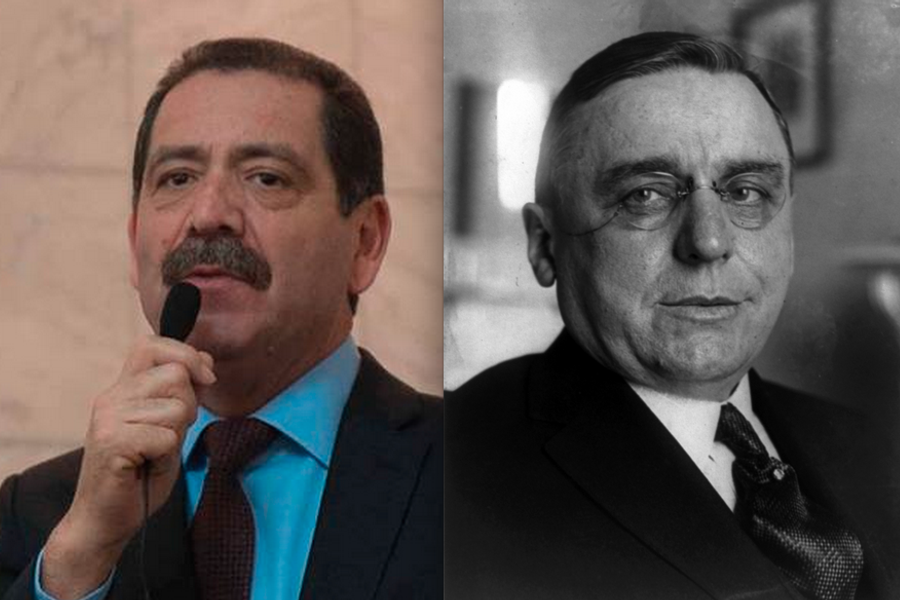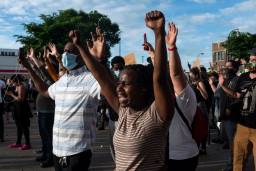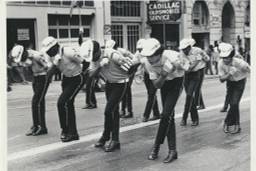Why Jesus “Chuy” Garcia Should Look to Anton Cermak’s Chicago Mayoral Campaign for Inspiration
The parallels between Cermak and Garcia—and Chicago’s political moment in the 1930s and now—are striking.
Peter Cole

When considering Jesus “Chuy” Garcia’s impressive run to become Chicago’s next mayor, many cannot help but make historical comparisons. Understandably, Harold Washington’s historic victory in 1983 springs to mind — not the least because Garcia served as a key Washington ally during those years. However, Washington did not run against a seemingly unbeatable incumbent, nor was he an immigrant.
Perhaps a better comparison is to 1931, when Anton Cermak built the original multiethnic coalition, shook up the city’s entrenched politics and won the mayor’s race. Cermak asserted that the government needed to help ordinary people rather than corrupt business elites and sought to reduce the violence then plaguing the city. Sound familiar?
Cermak — yes, there’s a street, formerly 22nd, named after him — pulled off an incredible victory by defeating William “Big Bill” Thompson. The parallels to the current election are striking.
Cermak arrived in the United States as an infant with his Czech parents from the Austro-Hungarian Empire. Like most immigrants, they came with next to nothing. First, they lived in a small town south of Joliet where Cermak, just a child, worked with his father in a coalmine. When Cermak was 12, his family moved to Chicago’s South Lawndale neighborhood, home to a large and thriving Czech community — the same neighborhood Garcia lives in today, more commonly referred to as Little Village and the heart of the city’s Mexican population.
As a teen, Cermak worked as a railroad brakeman and teamster, earning the nickname “Pushcart Tony,” before entering politics. He was elected to the state House of Representatives, City Council and Cook County Board of Commissioners before announcing his intention to become mayor. Incredibly, Garcia also was elected to the state legislature, City Council and County Board.
During his campaign, in 1931, Cermak was told he could not win because of his background. Instead, he turned his heritage into an advantage by effectively organizing the city’s many ethnic groups including Poles, East European Jews, Italians and African Americans — a kind of “Rainbow Coalition” long before similar efforts by Washington and Rev. Jesse Jackson. Among Chicago’s diverse working people, Cermak saw himself: fellow immigrants and Americans not represented by entrenched and rich political elites.
Rahm Emanuel looks a lot like an earlier incumbent, “Big Bill” Thompson, who ignored the needs of the people he was elected to serve. Thompson’s reign was so awful that even the Republican Chicago Tribune described his time as mayor as filled with “filth, corruption, obscenity, idiocy and bankruptcy.”
In 1928’s “Pineapple Primary,” for instance, Thompson supporters used hand grenades (“pineapples”) and other violent means to intimidate and literally kill political opponents. After Thompson’s 1928 re-election, gangsters like Al Capone made a mockery of the city and its police — most notoriously in the St. Valentine’s Day Massacre. Meanwhile, most Chicagoans suffered hard times during the Great Depression and became fed up with a mayor who ignored the needs of the people and failed to reduce crime.
While Cermak ran against an actual Republican, the current mayor brazenly acts like one: privatizing schools and parking meters, turning school teachers and unions into villains, serving the interests of big finance and earning the nickname Mayor 1%.
When Cermak challenged Thompson, he disparaged Cermak and, by extension, all immigrants and poor people: “I won’t take a back seat to that Bohunk, Chairmock, Chermack or whatever his name it. Tony, Tony, where’s your pushcart at? Can you picture a World’s Fair mayor? With a name like that?” Cermak’s famous response epitomized many Chicagoans’ feelings: “It’s true I didn’t come over on the Mayflower. But I came as soon as I could.”
There’s telling comparisons, as well, assuming Garcia wins the runoff. After his victory, Cermak faced concerted opposition from the city’s wealthier elements, who fiercely resisted any hikes to property taxes, making it that much harder for the local government to help those most in need during the depression. Along with assistance from the federal government, however, the city was able to reduce economic hardship and put Capone behind bars. (What else Cermak might have done remains a mystery as he was murdered at an event in Miami, Florida when an assassin’s bullets missed their intended mark, President Franklin D. Roosevelt, and killed Cermak instead.)
Of course, there are differences between the 1931 mayor’s race and this one. Most importantly, FDR supported Cermak whereas, as Chicagoans know all too well, Obama repeatedly has stumped for Emanuel. And, in 1931, the race pitted a Democrat against a Republican unlike the non-partisan election now, in which both contenders belong to the Democratic Party — even if Garcia, to quote Paul Wellstone, “represents the democratic wing of the Democratic Party” and Emanuel’s endorsements include Republicans Sen. Mark Kirk and Gov. Bruce Rauner.
Let’s face it: With Democrats like Emanuel — who the entire business and media elite along with the Republican Party openly support — Chicago has the most pro-finance, anti-union mayor that Republicans and rich Democrats could hope for. Garcia can inspire Chicago’s many demographic groups that largely have been disenfranchised and taken for granted by Emanuel — who, ironically, inherited the machine that Cermak built.
So what does this history lesson on Cermak offer Garcia and Chicagoans today?
First, Chicago is a wonderfully diverse and cosmopolitan city — a city of immigrants, especially of Mexicans and other Latinos. Garcia should model his campaign after Cermak’s, widely credited with creating the coalition that became the hallmark of Chicago’s Democratic Party. Cermak proved that a multiethnic coalition can win the Chicago’s mayor race, even against a powerful incumbent with the backing of the city’s economic elite. Garcia seems to have pursued such a strategy, uniting many of the city’s grassroots movements and drawing a growing number of endorsements by prominent African-American leaders.
Second and even more importantly, Cermak reminds us that this election is not primarily about electing Chicago’s first Latino mayor. Rather, Garcia — as Cermak (and Washington) did before — must (re)build a cross-class, multiethnic alliance of the working poor and middle classes to shake up a deeply entrenched and corrupt machine.
Whoever wins the mayor’s race will owe a debt to Cermak. If Emanuel wins, he will have had the good fortune of inheriting the political machine built by Cermak. But if Garcia can pull out a victory, then this city’s first Mexican-born mayor will be walking in the footsteps of a now-largely forgotten Czech mayor elected against the odds.







